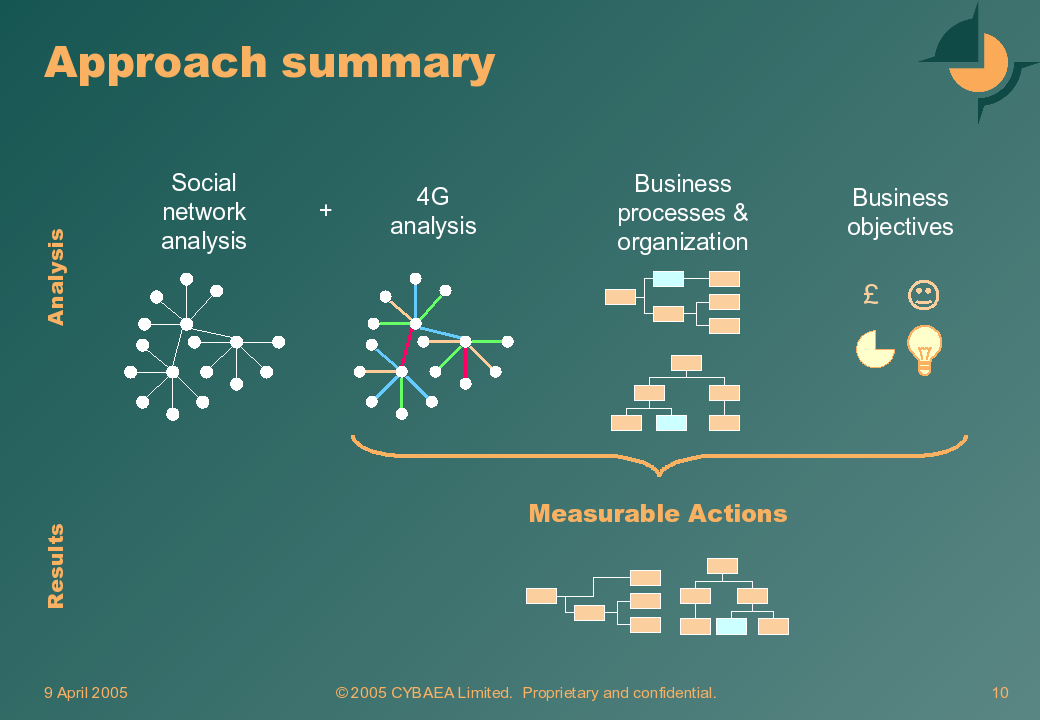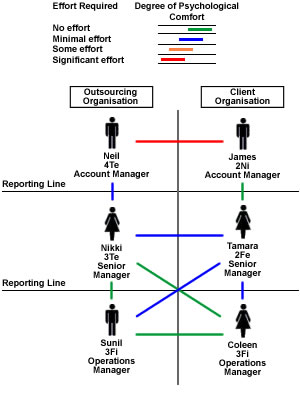We are fascinated by interfaces and boundaries. The tension and frictions that are present at boundaries can lead to phenomenal creativity and insights. Or to equally destructive actions.
Sometimes interfaces are introduced to harness this energy. Sometimes not, and that is when it is dangerous: untamed energy can easily turn destructive. A case of the latter is when a business partner with another organization to perform some of its functions. The business stays the same, but an organizational boundary has been introduced. The canonical example is outsourcing your customer contacts to India, but the challenge is everywhere you are doing business process outsourcing.
Outsourcing is a perilous business. It requires excellent management skills to select the right partners and execute the transition. There is an increasing understanding by executives that outsourcing is a journey, not a one-time event with an instant pay-off. But how do you set yourself up for long-term success and how do you build positive, enduring relationships with your partners?
Of the many challenges on the road to successful outsourcing and a lasting partnership, the issue of creating efficient human relationships is currently gaining attention.
Partnerships are built by humans, not contracts. As business process outsourcing matures and is considered less of a transaction and more of a long-term working relationship, this human element is moving to the forefront.
The interface between the two organizations, between two sets of cultures, value drivers, and operational practices is the key to success. We provide a systematic approach to objectively determining the nature of the human relationships across the organizational boundary in a classification with predictive power. Combined with a clear understanding of the planned organizational structures, roles and responsibilities, and the operational processes, we can resolve the frictions in the relationships before the contract is even signed.

Our approach analyzes and classifies relationships according to the 4G psychometric tool developed by Four Groups. This tool specifically looks at relationships and their social context, and is able to predict the challenges and strengths of individual relationships as well as of organizations and cultures. There are no “good” or “bad” relationships per se, only relationships that are productive or not in a specific business context. The approach combines 4G with an analysis of the business objectives (including both contractual performance measures and implicit objectives), the proposed roles and responsibilities and the processes that cross the organizational boundary.
This analysis leads to a set of recommendations that are actions for roles, responsibilities, and processes: the very things that managers can control in the relationship.

As an example of this approach, the illustration above shows a relationship between a company and its business process outsourcing partner that exists at three levels: account management, reporting, and operations. These levels map broadly to the frequency of interactions which may be monthly, weekly, and daily. (In most cases there would be several people involved in the reporting and operational level relationships but they are not shown here to simplify the diagram.)
One relationship structure could be for the senior managers to monitor the performance and escalate any issues or deviations from contractual service level agreements to the account directors as the people responsible for the commercial relationship. This may be a perfectly reasonable way of organizing the interface in many instances.
However, in this particular example, the 4G analysis has shown that the relationship between the two account directors, Neil and James is one where they will find it very hard to develop mutually beneficial win-win solutions. They don’t “chunk” or think at the same level of abstraction and therefore find it difficult to see the other person’s point of view.
One option is to put different people in that role and the approach will predict if they will have a productive relationship, but commercially and organizationally this may not be feasible.
The approach adopted is to empower the roles of the senior managers to not just monitor the issues, but to resolve them on behalf of their respective organizations, and to put in place the appropriate training, processes, and support structures to allow those managers to perform that role. In this scenario, the account directors are responsible for validating the solution, not creating it in the first instance, and the relationship is set up for long term success.
The combined approach identified that what had been a perfectly reasonable working structure in previous relationships would not work in this instance. As a solution, the approach in this example provided a process that satisfied everybody and created a successful working partnership.